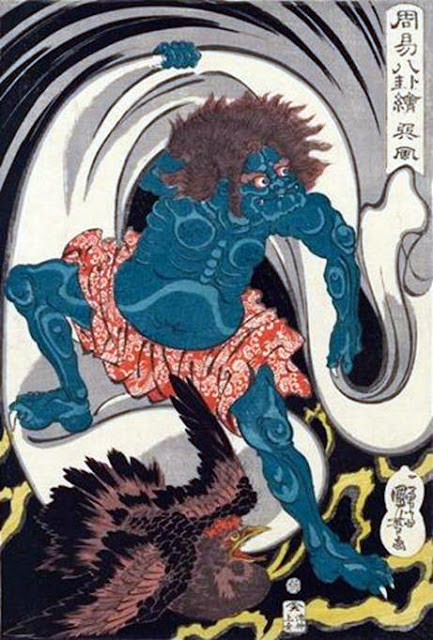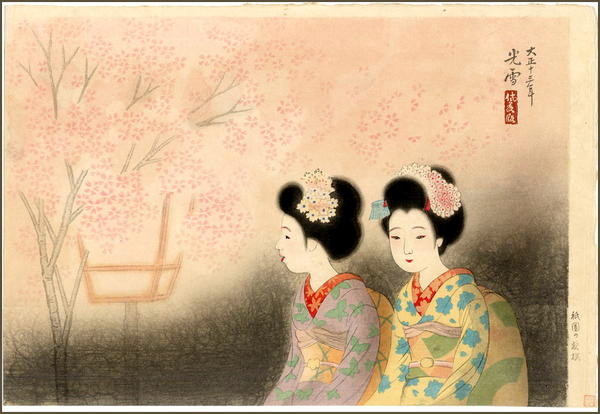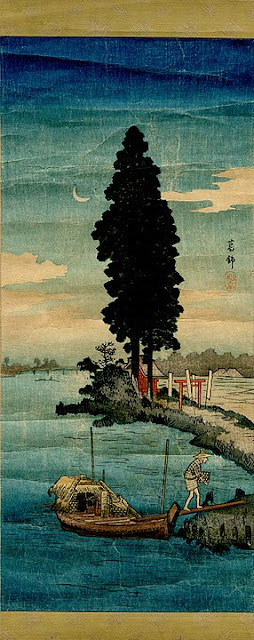During these almost two years since I stopped publishing new material here, I have received inummerable emails asking me to revive this blog. For long I resisted; among a large number of other activities, I simply had not time enough. However, a couple of passionate readers offered to donate some money for the project if I reconsidered, and making this a paying activity would change the preconditions. I agreed to revive the blog for a test period, after that we may see. Upon their advice, I will also put up a link for voluntary donations i Bitcoin. Donations are optional, but be aware that also very small donations make a difference.
Posting returns today, and I will try to keep it to Saturdays, just as before. I will, however, extend the subject of the blog beyond ukiyo-e in a strict sense and include some works from the Shin Hanga and Sosaku Hanga Movements, both of which can be said to be offsprings of ukiyo-e.
Just as before, every post will feature a print, sometimes a painting, and I will accompany it with a brief text. Sometimes the text will be only the name of the artist, the work and when it was made, but mostly I will try to elaborate briefly about artist and motive, sometimes with a short introduction to some element of Japanese history or folklore. I like to see this blog as a combination of entertainment and education: enjoy beautiful art and learn something about the rich Japanese culture at the same time.
















